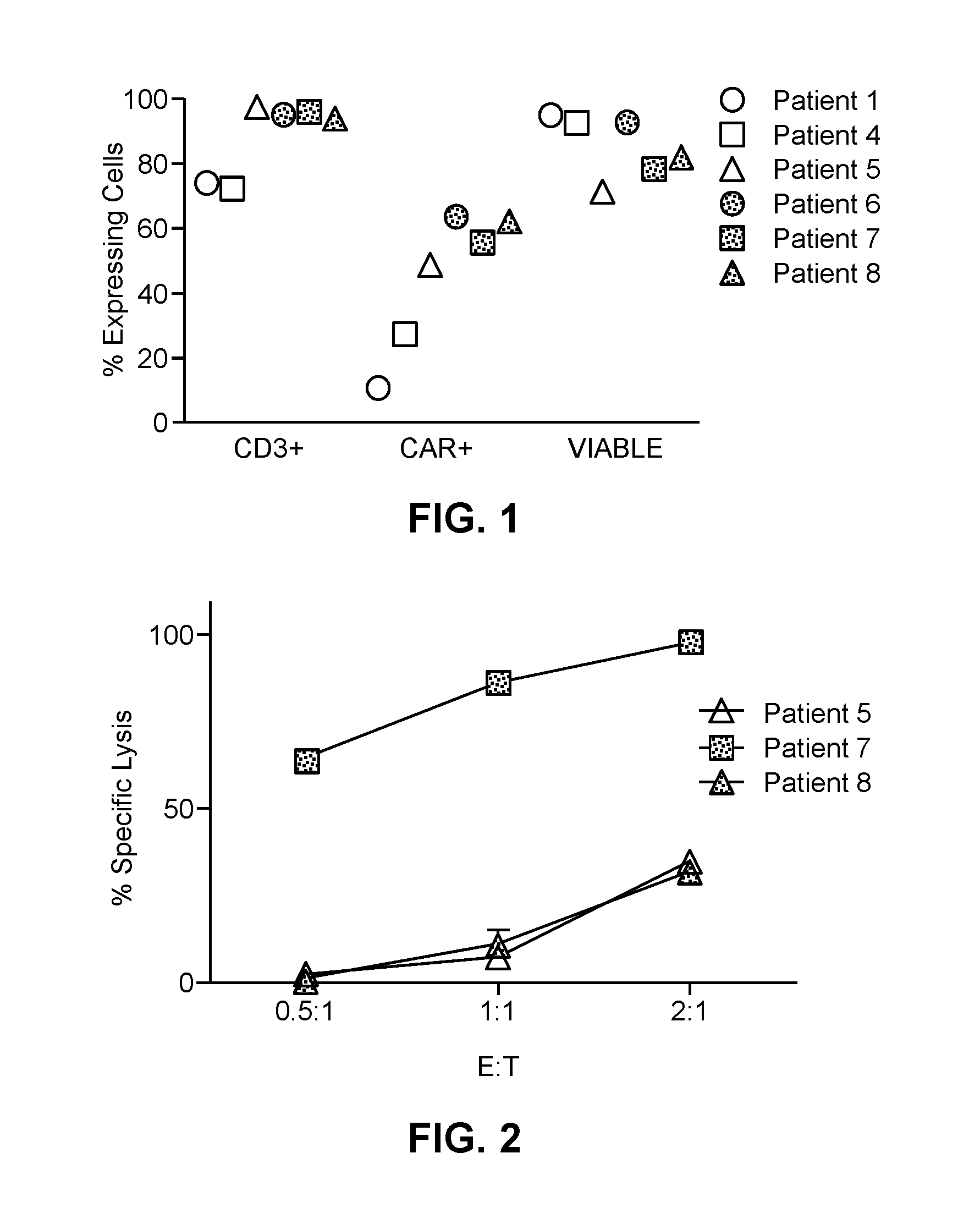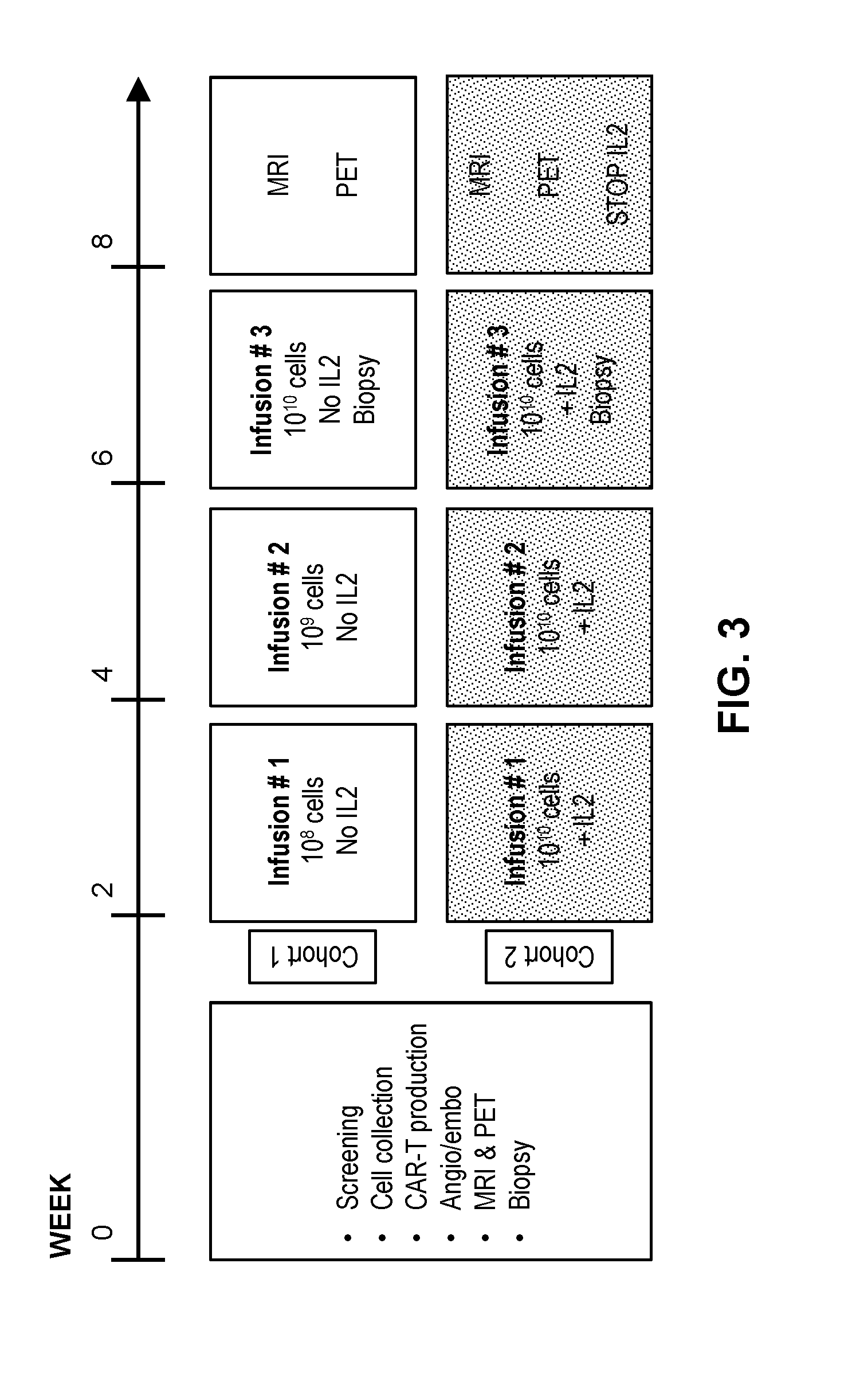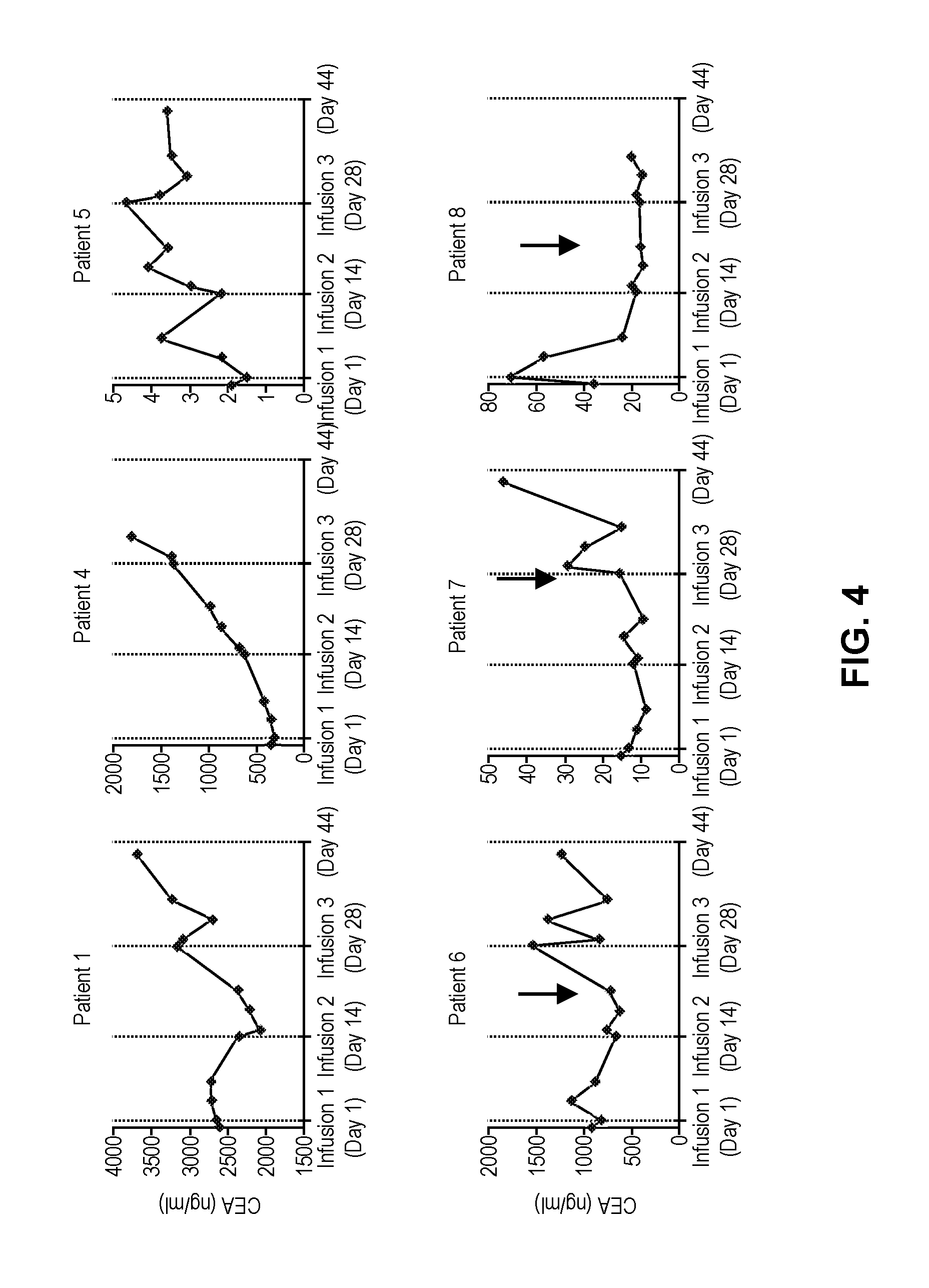Hepatic arterial infusion of car-t cells
a technology of cart cells and hepatic veins, which is applied in the direction of fusions for specific cell targeting, genetically modified cells, and immunological disorders, etc., can solve the problems of patients not being able to undergo resection, chemotherapy is not curative, and patients are not resected. to achieve the effect of decreasing the burden of tumors
- Summary
- Abstract
- Description
- Claims
- Application Information
AI Technical Summary
Benefits of technology
Problems solved by technology
Method used
Image
Examples
example 1
Human CAR-T Cell Production
[0103]As described in more detail below, six patients (referred to herein as Patient numbers 1, 4, 5, 6, 7 and 8) were treated with hepatic infusions of CAR-T cells which specifically target metastatic cells expressing the CEA antigen on their surface. The anti-CEA scfv-CD8α-CD28 / CD3ζ (Tandem) chimeric antigen receptor was cloned into the MFG retroviral backbone as previously described (FDA BB IND 10791) (Emtage et al., Clin Canc Res, 14:8112-8122, incorporated herein by reference in its entirety). Briefly, a tandem molecule was generated by molecularly fusing in an N-terminal to C-terminal direction, a hMN14 sFv (SEQ ID NO:1) of a monoclonal antibody which specifically binds CEA, a CD8 hinge segment, a CD28 extracellular domain, transmembrane domain and cytoplasmic domain and a ζ cytoplasmic domain. The resultant chimeric construct was cloned into a retroviral vector and verified by restriction digestion and sequencing. The clinical retroviral vector supe...
example 2
Clinical Study Design
[0108]A phase I clinical study (NCT01373047, RWH 11-335-99) was performed. The study enrolled eight patients with unresectable CEA+ adenocarcinoma LM who progressed on an average of 2.5 (range 2-4) lines of conventional systemic therapy (Table 2).
TABLE 2Patient CharacteristicsCEACAR-TIDSexAgeDxChemoDFIEHD#LMSize (cm)(ng / ml)IL-2Doses1F56Colon40None>1014.43265No32M52Colon20Lungs>1512.6 352No 0{circumflex over ( )}3M52Gastric10None15.7 29.9No 0{circumflex over ( )}{circumflex over ( )}4M55Ampullary*29Lungs, RPN11.7 362No35M63Colon337None25.7 2**No36M51Colon336Lungs>1010.51112Yes37F53Colon30Lungs>108.0 32Yes38M66Colon20Lungs>109.8 72Yes3Mean = 57Mean = 2.5Mean = 8.4Mean = 807.2DFI = disease free interval from diagnosis of primary to liver metastases; LM = liver metastases; SIZE = largest LM prior to CAR-T treatment; IL-2 = continuous IL-2 infusion with CAR-T; RPN = retroperitoneal nodes;*= pancreatobiliary subtype of ampullary carcinoma;{circumflex over ( )}= wi...
example 3
CAR-T Cell Hepatic Arterial Infusion
[0112]At baseline, a mapping angiogram was performed via a right common femoral artery approach. The gastroduodenal and right gastric arteries, in addition to other potential sources of extrahepatic perfusion, were embolized with microcoils. For CAR-T infusions, the same arterial access procedure was carried out and the cells were hand-injected via a 60 cc syringe at a rate of <2 cc / second with a total volume of 100 cc. Angiography with calibrated contrast rate was performed after the first 50 cc and at completion of the CAR-T infusion to confirm preserved arterial flow. Infusions were delivered into the proper hepatic artery when possible. In cases of aberrant hepatic arterial anatomy, where either the right or left hepatic artery did not arise from the proper hepatic artery, the dose was split based upon lobar volume calculations. In such cases, split doses were delivered separately into the right and left hepatic arteries to ensure proportionat...
PUM
| Property | Measurement | Unit |
|---|---|---|
| total volume | aaaaa | aaaaa |
| total volume | aaaaa | aaaaa |
| total volume | aaaaa | aaaaa |
Abstract
Description
Claims
Application Information
 Login to View More
Login to View More - R&D
- Intellectual Property
- Life Sciences
- Materials
- Tech Scout
- Unparalleled Data Quality
- Higher Quality Content
- 60% Fewer Hallucinations
Browse by: Latest US Patents, China's latest patents, Technical Efficacy Thesaurus, Application Domain, Technology Topic, Popular Technical Reports.
© 2025 PatSnap. All rights reserved.Legal|Privacy policy|Modern Slavery Act Transparency Statement|Sitemap|About US| Contact US: help@patsnap.com



